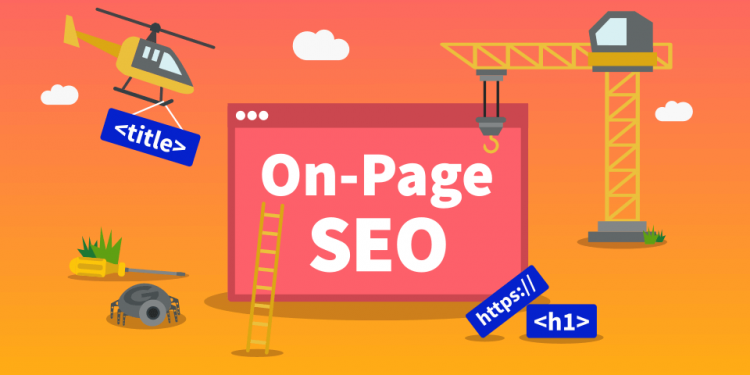Both on-page and off-page SEO are important for your website’s growth. In 2021, the optimization niche has changed, focusing more on mobile users, searcher’s intent, and content ‘for people’.
But is there a universal tutorial? What is on-page and off-page optimization?
We know there’s no set of tips that will do the job on their own. The niche is changing, as well as Google’s algorithms. We also know basic techniques that will definitely work and become the base of your website’s prosperity.
Let’s concentrate on those.
What You Need to Know About On-Page SEO
On-page process is everything that happens, well, on the pages of your website. We’ll talk about the following:
- Keyword analysis;
- KW usage;
- Content format and placement;
- Images;
- Code optimization.
Keyword analysis and usage
Keyword analysis and research ensure that you use only the most suitable options for your campaign intent. You can get ideas by asking yourself about the business/website:
- What value do I provide?
- What am I writing about?
- What am I selling?
As you get some ideas, use Google Search predictions to find out what keywords fit the purpose. You can also use SEMrush tools or choose another helper to see which phrases have a decent search rate yet medium competitiveness. These are perfect KWs for you.
Besides, when you get or buy SEO backlinks, you’ll need anchors for those mentions. Include them in the research.
Content Format and Keyword Placement
Content format is essential for easier understanding. You would prefer reading a structured text with headings and lists rather than a lump of large paragraphs, right?
Make sure your pages have:
- Clear headings with focus keywords;
- Lists where needed;
- Visuals;
- Little to no off-topic content.
Key phrases have to be in the title, subheadings, throughout the text, and alt-tags of images.
Visual Content
Images are important for UX and potential backlinks. A great way to make your content more engaging is to add video tutorials or infographics. Other websites will link to them, which will improve your backlink portfolio. Plus, it’s more interesting to learn new information this way.
Code Optimization
Focus on meta tags such as the title, description, and keywords (this one is optional).
Include focus KWs there, and make sure your metadata is clear and understandable both for users and search engines.
What You Need to Know About Off-Page SEO
Off-page search engines optimization techniques include everything regarding backlinks, reviews, and your presence outside of the website. We’ll review:
- Acquiring links to your pages from other websites;
- Embracing Instagram, Facebook, and other SNS;
- Google My Business.
Link-Building
First of all, you need to analyze your backlink portfolio and other off-page elements. You can check this article to find out more about the topic.
After detecting and removing toxic links, you’ll need to create relevant and high-quality ones. There are many practices that allow you to create a beautiful list of mentions:
- Guest posting – you write an engaging piece of content for another website similar to yours by topic and ask to insert a backlink there;
- Unlinked mentions – you set Google Alerts to look for references to your website, brand, products, or industry words and ask owners of those sites for a link;
- Backlink purchase – you cooperate with a service that finds the best locations for your links.
The cost for backlinks shouldn’t be too large. If a blogger asks for a lot of money, this is a full-on campaign. You should think about whether the price will be justified with the results. Consider buying backlinks from specialized services. There, a team of professionals will choose the most suitable websites for your content, write guest posts for you when needed, and negotiate the best terms and locations for your links.
SNS and GMB
Social networking services are vast platforms where you can add inbound links to various sections of your website, spread awareness of the brand, and communicate with potential customers.
Create interesting profiles and guide people to your site. This will add to the user experience.
Google My Business is another amazing platform where you create a portfolio or a resume of your company. This is your business card in the online world. Put some time and effort into its update with every new campaign.
Optimize, Analyze, Adjust
If we had to choose three words to describe the needs of on-page and off-page optimization, we would choose ‘optimize, analyze, adjust’.
Use the strategies we’ve mentioned to improve your website’s quality. Research keywords properly, analyze them and choose the most suitable for the campaign intent. Optimize user experience, provide proper support for visitors. Write high-quality content, create infographics, post images.
Create and customize social media accounts. Don’t hesitate to hire specialists that can help you with that and get the best outcome quickly. Create an account on Google My Business. Present your project and see what people write about it in reviews. Reply to them, build trust, establish relationships.
Again, don’t doubt the professionalism of others. Hire a team that will help you with the analysis, creation, implementation, and monitoring of your campaign.
Follow Techdee for more!





